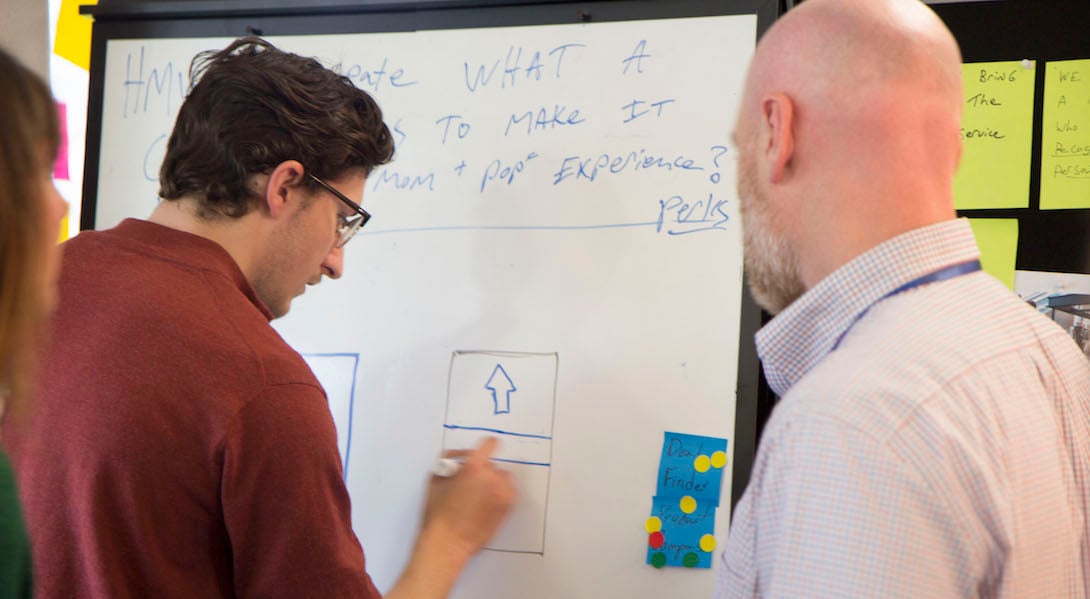Design Thinking is a nonlinear problem-solving process that consists of five iterative steps; empathize, define, ideate, prototype and test. In short to empathize with whom you’re designing for, define their needs, ideate solutions based upon those needs, prototype those solutions and then test them. Trust in the process, you hear it said all the time and while it’s important to do so, it only works if you can fall in love with the problem first, and here’s why:
Design Thinking is, in essence quite similar to the Scientific Method. Both derive a plausible conjecture that needs to be tested in order to prove its validity. The difference lies in how human-centered Design Thinking is. Regardless of whether a scientist has proven or disproved their hypothesis their work is still seen as knowledge gained, and therefore a success for the scientific community (when documented and conducted properly). It’s important to try and treat the Design Thinking process just the same way. However, people often develop a personal connection to their ideas, and inherently want them to be a successful solution. While the intention here is good it often leads people away from the problem they started out trying to solve. Instead of designing a solution for the problem, people tend to make the problem fit their solution. Taking oneself out of the process and truly designing for the user and the problems that have been defined is hard, but it all starts with falling in love with the problem at hand.

When given the opportunity to help coach a Design Thinking boot camp at Blue Cross Blue Shield, I saw just how natural it is for people to fall in love with an idea rather than the problem. As part of our Design Thinking boot camp health insurance professionals were asked to ideate around how we might bring a hometown feeling to our end user to make them feel like more than just a number to a large company. This was something that they personally connected with, which made it easy for them to empathize with the user. While this lead to a fantastic ideation session, when it came time to narrow dozens of ideas down to one, there was hesitation from my team members. They had already started to develop a connection to certain ideas even though they weren’t the best solutions to the problem we had defined. Later on, after prototyping the concept and getting feedback from end users, it was time to make changes. Again, I found my team hesitant to entirely discard what we had first designed, but the solution we developed didn’t work, I had to remind them that’s ok! After I got my team to realize how much we learned from our first prototype they were able to step back from the original idea, and pursue a new concept that better addressed the challenge.
At the end of the two day boot camp we discussed how bringing design thinking into everyday work can drive innovation. It was then I had started to realize that most of my team had really started to buy in. It became apparent to them that a small change of mindset makes a big difference. Failure seems frowned upon in a lot of work places, but when used constructively it’s simply just part of the process, the process that we trust.
Falling in love with the problem means accepting your ideas might be wrong. It means the solution that’s in front of you, regardless of how much work you’ve put into it, isn’t valuable until it’s been successfully tested with the real end user. Most importantly it means that ideas are not precious, but the problem is.
Corwin Ackerman is an Industrial Design undergraduate at Wentworth Institute of Technology (’18) on co-op at Essential Design.
Essential Design is a leading Innovation Strategy & Design consultancy. We work across the healthcare, consumer, and commercial industries, helping our clients conceive and drive to market comprehensive digital, physical, and service experiences.


